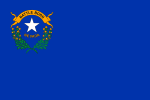Arbor View High School
2005 establishments in NevadaClark County School DistrictEducational institutions established in 2005High schools in Clark County, NevadaNevada building and structure stubs ... and 2 more
Public high schools in NevadaWestern United States school stubs
Arbor View High School is a high school in northwestern unincorporated Clark County, Nevada, United States that opened in 2005. It is part of the Clark County School District.
Excerpt from the Wikipedia article Arbor View High School (License: CC BY-SA 3.0, Authors).Arbor View High School
North Buffalo Drive, Las Vegas Tule Springs
Geographical coordinates (GPS) Address Nearby Places Show on map
Geographical coordinates (GPS)
| Latitude | Longitude |
|---|---|
| N 36.3029 ° | E -115.2578 ° |
Address
North Buffalo Drive
89131 Las Vegas, Tule Springs
Nevada, United States
Open on Google Maps






